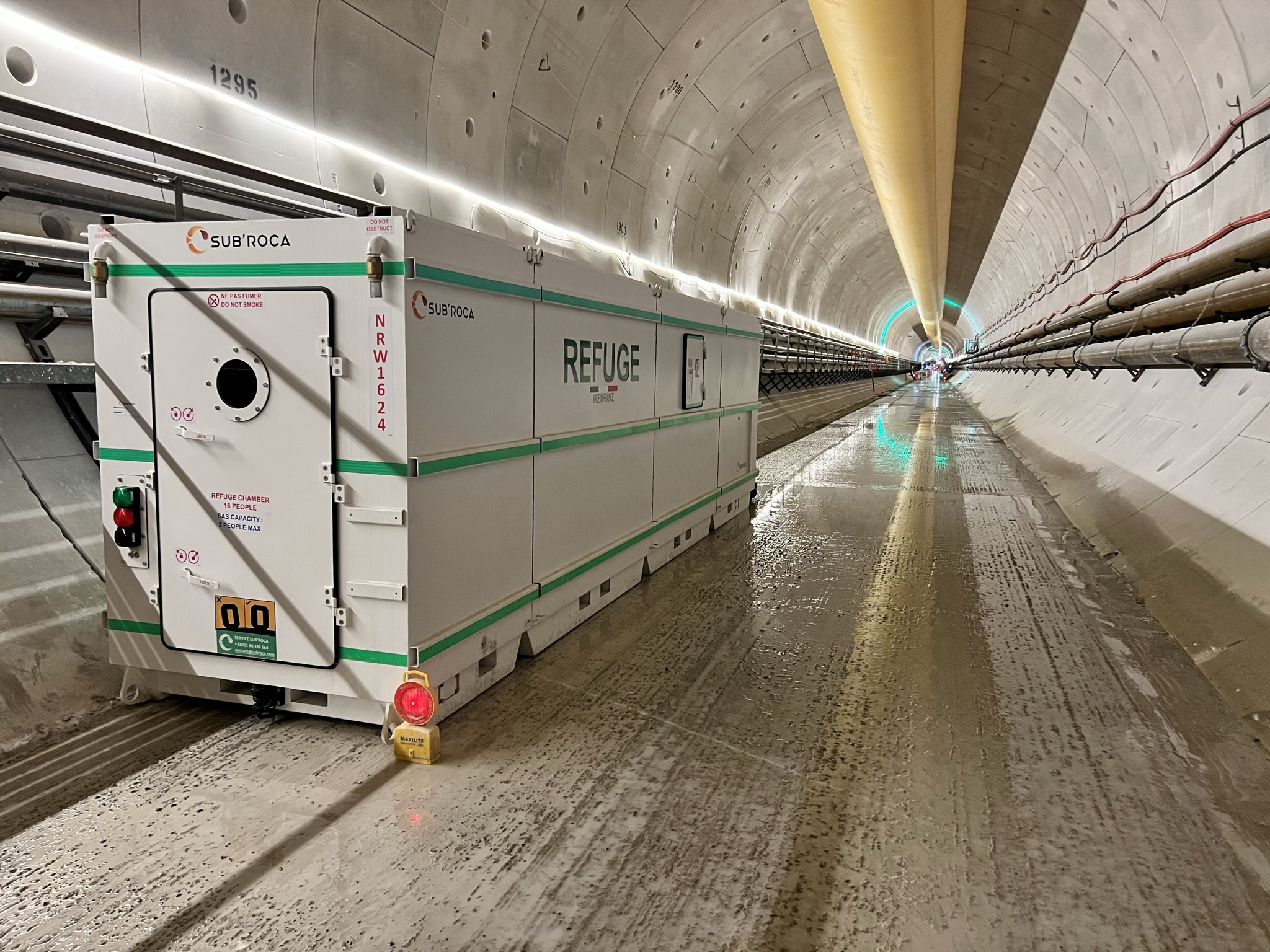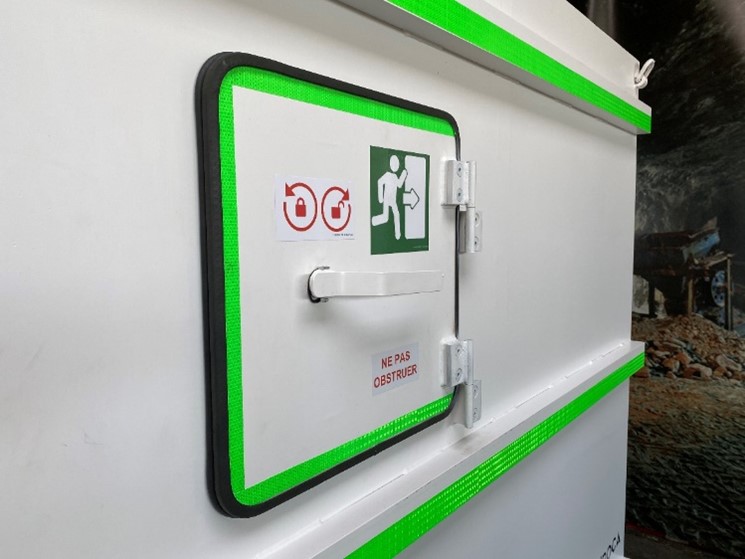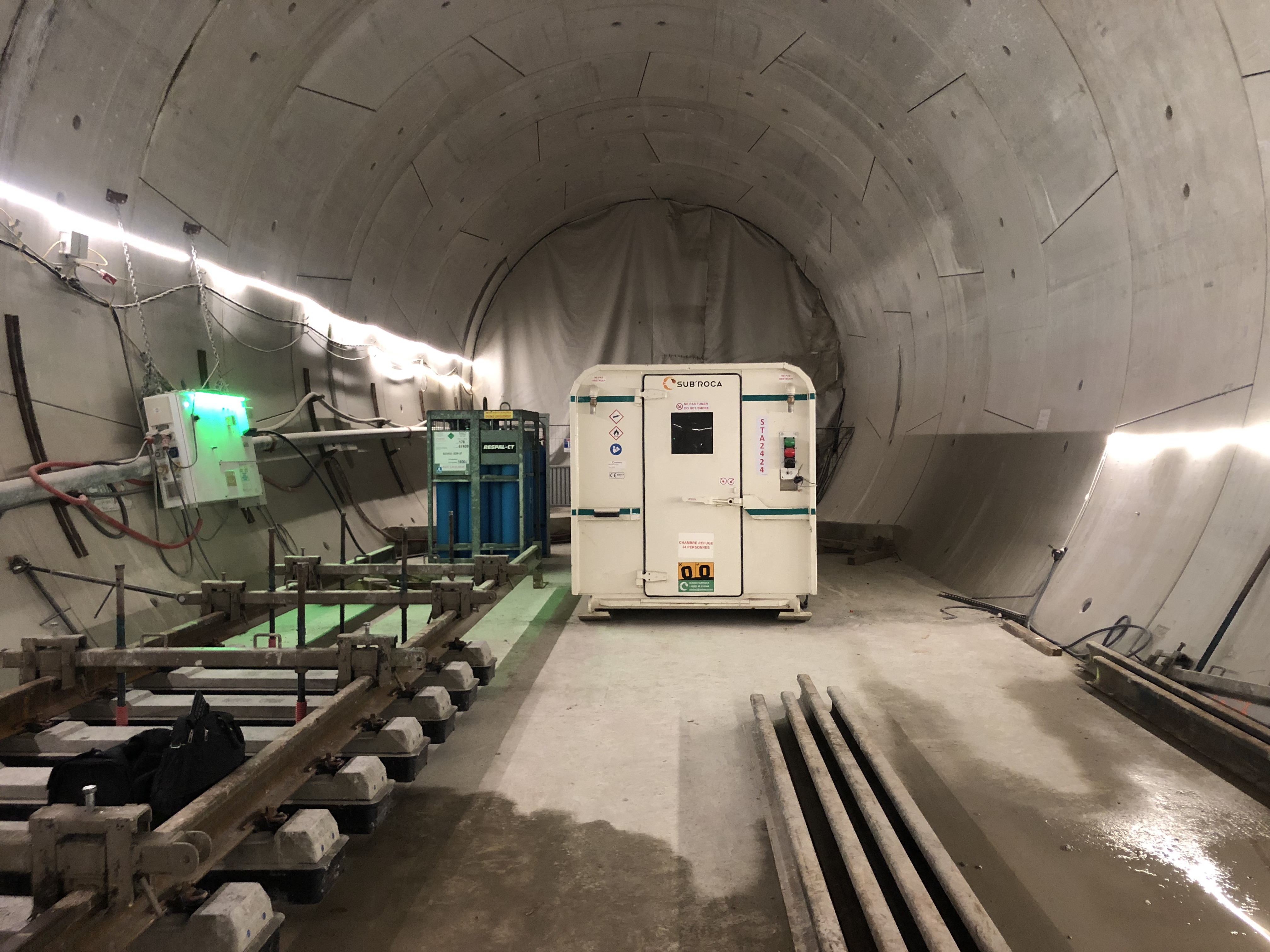Why should a refuge chamber be visible, accessible and properly located?
A refuge chamber is designed to increase the chances of survival of personnel in the event of a disaster in an underground environment (mines, tunnels, underground structures and other similar environments). This equipment provides a safe area where operators will regroup while awaiting extraction. The installation of a confined space shelter requires specific recommendations to be followed and if used, operators must have easy access to the emergency shelter(s). Why must an emergency shelter be visible, accessible and properly located in an underground environment?

VISIBILITY and accessibility
In an emergency, every minute counts. It is necessary for the operators evolving in an underground environment to quickly identify the nearest emergency shelter in order to reach safety. To be easily perceived by the operators, the survival cabin must respect several conditions:
It must be painted white;
It must be covered with a green reflective strip at least 100 mm wide all around the cabin (according to the European standard EN 16191). It is essential to use such a reflective device to increase the visibility of the equipment, by nature installed in dark environments;
To be positioned in a visible place, i.e. without being hidden by construction machinery or a stock of equipment.
This good visibility is also necessary for rescue teams.
At Subroca, we have tripled the amount of green reflective tape to improve the visibility of our emergency shelters.

In terms of accessibility, the shelter should be easily accessible and free of obstructions such as debris, piping systems, or other heavy equipment. Under no circumstances should ongoing activities in the vicinity of the emergency shelter prevent access. For example, all loading and trucking operations should be conducted away from the shelter to prevent the access door from being rendered inaccessible in the event of a vehicle fire. Similarly, emergency hatches on both sides of a shelter must be accessible at all times.
Finally, the shelter must be located in a safe place, away from the risk of collapse, falling rocks or other underground hazards: workers must be able to access it without risking their safety.
The emergency shelter must therefore be accessible at all times, and care must be taken to ensure that the number of operators is consistent with the capacity of the various shelters. Sub’roca will help you to draw up your specifications for all your projects and will offer you safety equipment adapted to your needs.
the positioning of the emergency shelter
In an underground environment, an emergency shelter is seen as the ultimate place of safety. In the event of an incident, its location plays a key role. Whether it is every 100, 200 or 300 meters, the equipment must be positioned at regular intervals in a tunnel that extends over several kilometers. This ensures that workers have easy access to an emergency shelter in the event of an emergency and that the distance to be covered is not too great. However, regulations regarding the distance at which emergency shelters must be located can vary by country and region. According to the ITA WG5 (International Tunnelling Association Working Group 5) recommendation, in conventional tunnels the emergency shelter should be located between 150 m and 300 m from the tunnel face.
Also, emergency shelters should be located close to active working areas in order to be able to take refuge there in case of emergency. This is particularly the case for the excavation faces, which must be equipped with a mobile shelter in the case of traditional excavation, or with a tunnel boring machine (TBM) shelter in the case of mechanized excavation.
The number and distribution of emergency shelters depends on the number of people working in the different areas and an analysis of the risks they face. According to the Australian Government’s Department of Mines, the assessment of location should be based on the distance that a reasonably fit person can walk at a moderate walking pace, using 50% of the SCSR (Self-contained self-rescue device) rating, to reach the nearest refuge chamber. In theory, no one should walk more than 750 m to reach one of the installed shelters. In addition, the shelter access door should be positioned toward the location from which operators can arrive to allow for a smoother entry.

Sub’roca recommends, given the diversity of international regulations, to position a refuge every 300 to 350 meters, so that the distance between two refuges is always less than or equal to 700 meters. This distribution avoids the consequences of a full or broken down hut on the fallback route.
In addition, the shelter should be placed on a flat surface so that its stability is not compromised by a potential disaster. Also, emergency shelter areas near facilities such as explosives magazines, transformer installations, pumping stations, or vehicle parking areas should be avoided as they are potential sources of fire. According to ITA WG5, a chamber should not be located directly under constant leakage or seepage points where water can accumulate. A regular assessment of the location of emergency shelters should be conducted.
Overall, the placement of an emergency shelter should be done with maximum accessibility and visibility. The appearance of smoke and heat during an incident disrupt the operators’ vision. Emergency shelters must be located in accessible and easily identifiable places, close to risk areas and evacuation routes, in order to allow operators to reach safety quickly and efficiently.
The respect of the present extract of the various international recommendations, as well as the respect of the deadlines of periodic controls, make it possible to ensure the conformity and the good functioning of the equipment during emergency situations.
